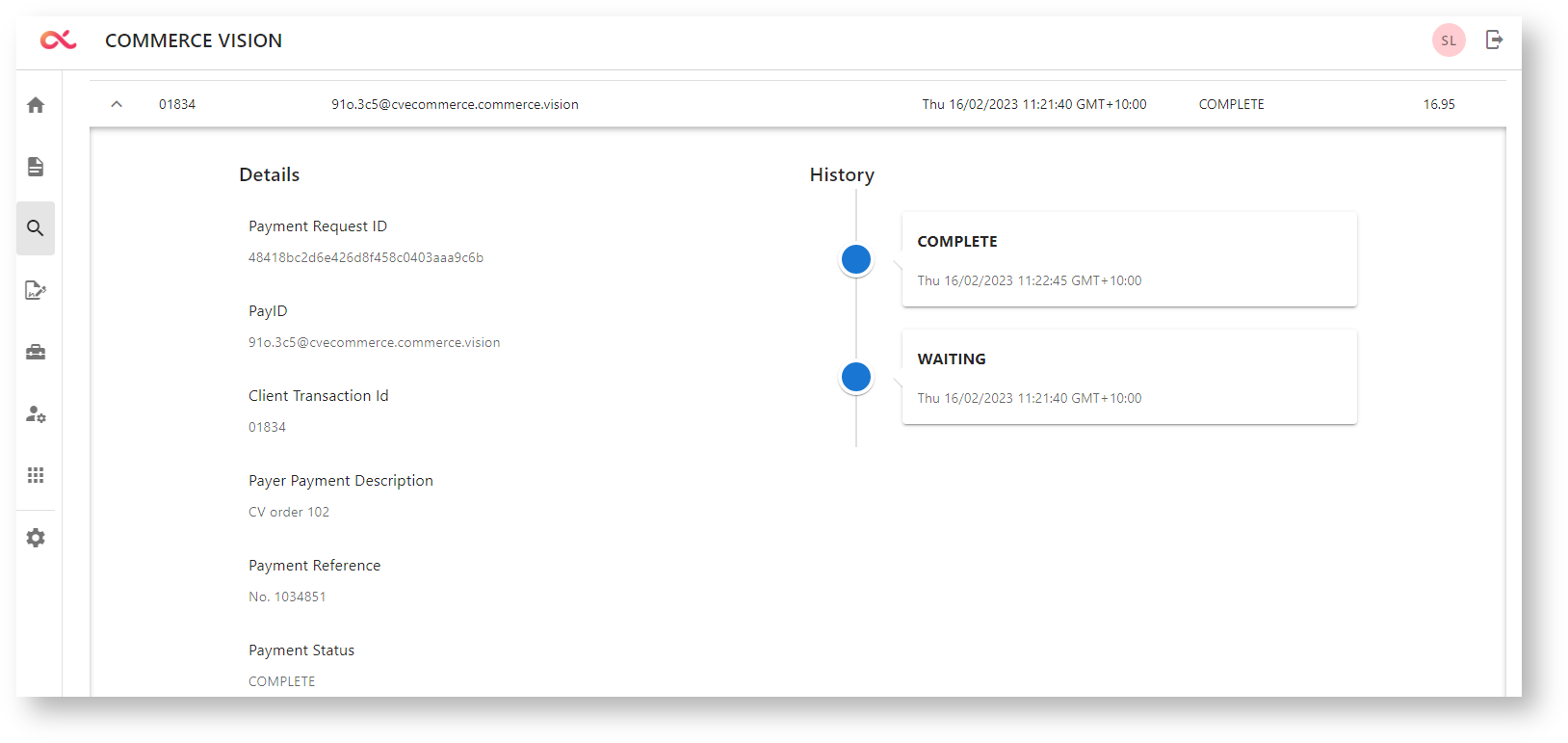PayID & Order Payments
When your customer selects to pay by PayID, the system sends Azupay a request that contains:
- your Azupay client ID
- the client transaction ID (order number)
- payment description (reference added in the Azupay dashboard about payment. Default: your business + order number)
- payment amount
Azupay's response contains the above and also:
- the payment request ID
- a unique PayID
- request creation date and time
- PayID expiry date/time
- payment request status of 'WAITING'
What is the Payment Request ID?
Think of the PayID email address as a customer-facing tool. It lets a shopper pay for their order by bank transfer without the need to know or enter your full bank account details. In fact, they only see the PayID.
But for official record-keeping as a payment method, a lot of other details are recorded. For your team and CV ecommerce's payment and order systems, it is important to know which PayID email address was used or not used for which order. It is possible for a shopper to have generated more than one PayID against an order. (Don't worry, only one PayID can be active againsts one order at any time.) And a PayID is eventually deregistered and deleted. Then there are the interests of other stakeholders invested in the payment transaction, i.e., Azupay, the payer's bank, your bank, etc.
For each PayID generated, Azupay records a bunch of details that is or can be of use for payment, or later on if payment or non-payment needs to be traced. The Payment Request ID is the official record identifier name that keeps together all the details of a PayID email address. You can use it to officially track a PayID payment to an order. CV ecommerce also records the Payment Request ID as part of an order payment record.
PayID Payment Tracking
It is possible for more than one PayID to be generated per order. For example, the user selects to pay by PayID and the payment request generates a PayID. They click Cancel, automatically deactivating that PayID. They select PayID as payment again. A new PayID request is generated with a new PayID.
To track which payment request was used to pay for an order, it is best to track or verify payment using the Payment Request ID. This ID is always linked to a specific PayID and is included in any payment update sent or received by Azupay. In CV ecommerce, it is added in PayID payment notification emails to customers and as part of the PayID payment record on the Release Payments page.
For full details of the PayID transaction and status, check the payment in the the Azupay Dashboard.
PayID Payment Statuses
Azupay marks one of these statuses against a generated PayID instance:
COMPLETE- the PayID was used to successfully pay for the order and Azupay has received confirmation from the payer's bank- NOTE - the PayID Payment Request record with 'complete' status also includes: completed date/time, amount received, payer entered reference (if any)
WAITING- the PayID was generated against the order BUT Azupay has not yet received confirmation from the payer's bank AND the PayID has not expired.NOTE - you can only delete a
PaymentRequestthat is inWAITINGstatus
EXPIRED- no acceptable payment was received before the PaymentRequest expiredRETURN_IN_PROGRESS- a payment was received but is in the midst of being returned to the source accountRETURN_COMPLETE- the payment was returned to the source account
PayID Emails
The system provides four PayID customer notification emails that are auto-scheduled to send when certain payment events occur. Each updates the buyer with their PayID payment record and any status updates. You can also set these emails to be bcc'ed to relevant team members.
All emails include the PayID for internal tracking and payment enquiries by customers. See: Azupay PayID Emails
Release Payments
Coming soon
Your team members can manually release or reject a PayID payment, or check its status by using the Release Payments feature. Search by receipt number or order/invoice number. Payment details include the Payment Request ID.


